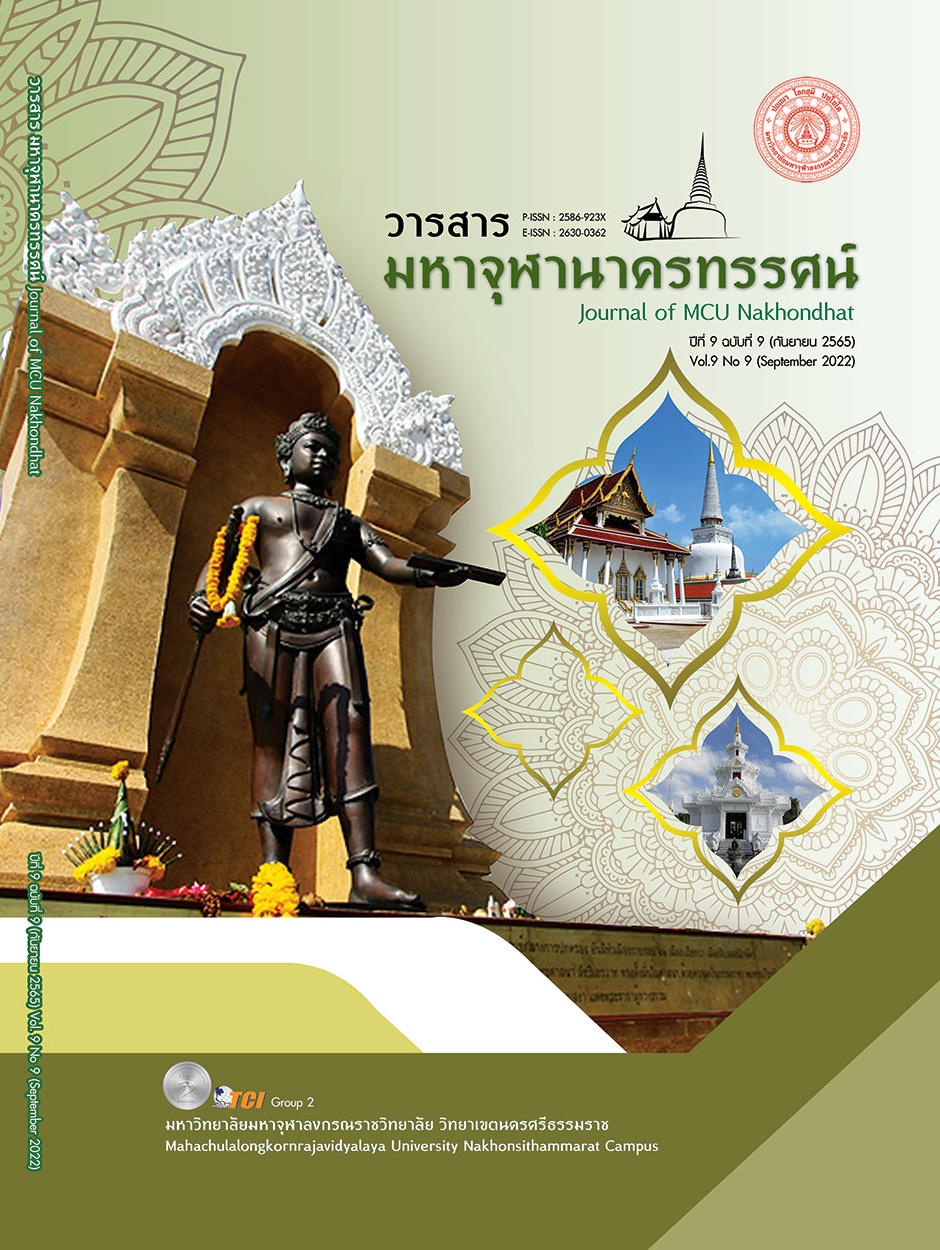PUBLIC POLICY: PENSION FOR THE ELDERLY, LOCAL ADMINISTRATIVE ORGANIZATIONS
Main Article Content
Abstract
The pension for the elderly began to materialize in 1992 from the concept of the Department of Public Welfare. (In the government during the reign of Mr. Chuan Leekpai, Prime Minister for two terms, between 1992 and 1995), the pension for the elderly is considered a type of social welfare. The government allocated to people aged 60 years and over, which is a social welfare arrangement for the elderly. through participation from all sectors, including the responsible government organization, namely the Ministry of Social Development and Human Security; including local government organizations that play a role in providing welfare for the elderly has officially started At present, local government organizations To proceed with the payment of the elderly pension in accordance with the Cabinet resolution on October 18, 2011, has set the rate of payment of the elderly pension in a ladder rate. Will receive a pension varies according to age. For senior citizens who are pensioners will not receive pension Even though the elderly receive a living allowance from the government, they still receive it from their children. From the research results, it was found that there were 3 living styles of the elderly, namely 1) living directly with their children 2) living alone. or living as a married couple but not far from their children, such as living in the same city; and 3) living alone. or living as a married couple But far from children, all three styles are universal. The way of living was related to the money that children gave to the elderly. and the care received from the children Remitting money and caring for the elderly in the family reflect the values of gratitude. which is seen in the present of Thai society
Article Details

This work is licensed under a Creative Commons Attribution-NonCommercial-NoDerivatives 4.0 International License.
References
กรมส่งเสริมการปกครองท้องถิ่น. (2559). การจัดสวัสดิการสังคมเกี่ยวกับผู้สูงอายุและการวิเคราะห์บทบาทอำนาจหน้าที่ด้านการสงเคราะห์ผู้สูงอายุขององค์กรปกครองส่วนท้องถิ่น. เรียกใช้เมื่อ 30 มีนาคม 2565 จาก http://www.dla.go.th /work/e_book/eb1/ stan16/p2.pdf
กระทรวงพัฒนาสังคมและความมั่นคงของมนุษย์. (2557). ประชากรผู้สูงอายุไทย: ปัจจุบันและอนาคต. เรียกใช้เมื่อ 30 มีนาคม 2557 จาก https://www.m-society.go.th/ article_attach/13225/17347.pdf
จักรี ศรีจารุเมธีญาณ. (2563). การนำนโยบายไปปฏิบัติ. วารสารวิจัยธรรมศึกษา, 3(1), 19-26.
นราธิป ศรีราม. (2557). แนวคิดเกี่ยวกับการจัดบริการสาธารณะของท้องถิ่น เอกสารการสอนชุดวิชาการจัดบริการสาธารณะของท้องถิ่น หน่วยที่ 1 - 7. นนทบุรี: สำนักพิมพ์มหาวิทยาลัยสุโขทัยธรรมาธิราช.
มยุรี อนุมานราชธน. (2547). นโยบายสาธารณะ แนวคิด กระบวนการและการวิเคราะห์. เชียงใหม่: คะนึงนิจการพิมพ์.
ระบบฐานข้อมูลด้านสังคมและคุณภาพชีวิต. (2560). ความมั่นคงหลักประกันรายได้. เรียกใช้เมื่อ 29 มีนาคม 2565 จาก https://socail.nesdb.go.th
เรืองวิทย์ เกษสุวรรณ. (2550). การนำนโยบายไปปฏิบัติ. (พิมพ์ครั้งที่ 11). กรุงเทพมหานคร: บพิธการพิมพ์.
วีระศักดิ์ เครือเทพ และคณะ. (2558). 15 ปี การกระจายอำนาจของไทย สรุปผลการวิจัยและข้อเสนอแนะเชิงนโยบาย. กรุงเทพมหานคร: ศูนย์ส่งเสริมนวัตกรรมและธรรมาภิบาลท้องถิ่น.
สำนักงานคณะกรรมการพัฒนาการเศรษฐกิจและสังคมแห่งชาติ. (2560). แผนพัฒนาเศรษฐกิจและสังคมแห่งชาติ (ฉบับที่ 12) 2560 - 2564. เรียกใช้เมื่อ 29 มีนาคม 2565 จาก http://www.nesdc.go.th
สำนักส่งเสริมและพิทักษ์ผู้สูงอายุ. (2552). ระเบียบกระทรวงมหาดไทยว่าด้วย หลักเกณฑ์การจ่ายเบี้ยยังชีพผู้สูงอายุ พ.ศ. 2552. เรียกใช้เมื่อ 29 มีนาคม 2565 จาก http://www.oppo.opp.go.th/pages/law/law_06.html
Easton, David. (1953). The Political System An Inquiry in to the State of Political Science. New York: Alfred A. Knorf.
Mazmanian, D. A., & Sabatier, P. A. (1989). Implementation and publicpolicy: With a new postscript. Latham: MD: University Press ofAmerica.


